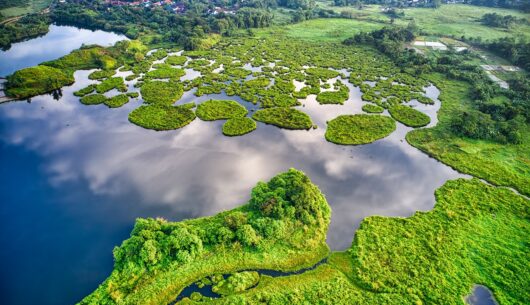Blog
The impact of prefabricated houses on ecology
Do you associate building a house with a long-term process that you have to oversee all the time and check if everything is going according to plan? What if we told you that it doesn’t always have to be this way? That there is a solution to this. And more ecological. Maybe you have noticed that eco-friendly prefabricated houses have recently been gaining a significant increase in popularity on the construction market. What does that mean? Well, these are structures that are created in a factory, and then transported and assembled at the destination. However, in this article, we want to focus on their ecological impact in some of the most important aspects.

How does an eco-friendly prefabricated house affect ecology?
For some, it may be new information, and for others it will only be a confirmation. Well, an ecological prefabricated house is a building constructed of materials that do not harm health. Throughout the construction process, great emphasis is placed on minimizing energy consumption, whether in material production, transport or assembly. Energy saving is also a priority during the use of the house. The walls are characterized by excellent thermal insulation, which makes it easier to maintain the right temperature inside the building both in winter and summer. During construction, wood is used, which is a renewable raw material and available in large quantities.
Below are the most important aspects that we took into account when considering the impact of prefabricated houses on ecology.
Optimal use of raw materials
First of all, prefabricated houses are characterized by the minimized consumption of raw materials, as they are produced in controlled factory conditions, where the amount of materials needed for construction can be optimized. What’s more, thanks to the recyclability and reusability of components, they are a much more sustainable solution in the long term.
Reduction of construction waste
There is no denying that traditional house construction generates a really large amount of waste that ends up in landfills. An eco-friendly prefabricated house is built in a few days, and the prefabricated elements are prepared according to the design, which means that they do not need to be cut and modified at later stages. This contributes to reducing waste.
Use of renewable energy
More and more prefabricated houses are equipped with installations that obtain energy from renewable sources, such as photovoltaic panels, which you can read more about in our article on whether photovoltaic panels or heat pumps are profitable. This allows for a reduction in energy consumption from the fossil fuel-based power grid.
Reducing CO2 emissions
As we have already mentioned, the construction of an eco house from prefabricated elements takes only a few days. Production in a factory significantly reduces the construction time, which means that the amount of raw materials transported to the construction site is much smaller. Which, in turn, translates into a reduction in carbon dioxide emissions associated with transport.
Improved thermal insulation
Thanks to the fact that prefabricated houses are designed with energy efficiency in mind, they provide excellent thermal insulation. Regardless of the choice of technology that allows you to build a house, each provides thermal insulation. These technologies reduce the need for energy for heating or cooling, which has a positive impact on the environment.
Innovative technologies
Prefabricated houses often use innovative construction technologies, such as: expanded clay concrete prefabricated elements, heavy wooden prefabricated elements, or CLT technology. Each of them contributes to the reduction of CO2 emissions in both the production and operation processes. The choice of ecological materials and the use of modern energy technologies are key elements influencing the reduction of the negative impact on the environment.
Read also: What is a zero-emission house?